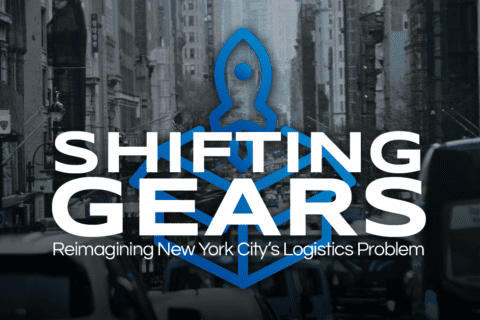Miracle on I-79 and More: Unforgettable Stories from the Trucking World
Welcome back to another week of excitement in the world of trucking news! You’ll definitely want to hold onto your seats! The industry has experienced a rollercoaster of a week, tackling all sorts of challenges such as fluctuating freight demands and looming recession fears. But fear not – recent data reveals a silver lining on the horizon, suggesting better days may be just around the corner. Join us as we dive into this week’s trucker news roundup, uncovering the latest survey insights, legislative breakthroughs, and game-changing investments in driver training and retention that are shaping the future of trucking. Trucking Industry Sees Light at the End of the Tunnel Spot Truckload Demand Reaches Turning Point Truckers all across North America have faced challenges as freight demand has slowed down over the past year, but recent data suggests that the worst may soon be over. The latest Bloomberg Intelligence Truckstop survey indicates that we may be at the low point for spot truckload demand and rates, with expectations for improvement over the next 3 to 6 months. Seasonal Trends and Inventory Shifts Offer Hope According to the survey, 60% of respondents expect volumes to rise over the next three to six months, a significant increase from the fourth-quarter 2022 poll. Soft demand and higher costs were cited as the main reasons for not purchasing equipment. As seasonal trends begin to influence the market, and higher-cost capacity is forced out, rates may receive additional support as inventory levels begin to return to more normal levels. There seems to be little consensus on when exactly spot rates will hit rock bottom, but some are beginning to believe improvements could be seen as early as the second quarter of 2023, leading to firmer contract rates in the latter half of the year. The Looming Recession: A Cloud Over Recovery? Despite these positive signs, 79% of survey respondents believe that the US is either already in a recession or one is imminent. A separate report revealed that freight shipments fell 4% in March compared to the previous year, with demand still being impacted by high inventory levels and a global economic slowdown. However, the shift in sentiment is being seen as a sign of encouragement, and truckers can look forward to a potential market rebalance in the near future. Iowa Senate Puts a Cap on Trucking Company Liability From $2 Million to $5 Million: Setting a Limit The Iowa Senate recently passed a bill, Senate File 228, which sets a $5 million limit on noneconomic damages that can be awarded to a victim in a lawsuit involving a trucking company accident. Noneconomic damages include pain and suffering, mental anguish, or loss of consortium of a spouse. Initially, the bill proposed a $2 million cap, but to ensure passage in the House, lawmakers increased the limit to $5 million, with additional adjustments to be implemented for inflation beginning in 2028. Addressing “Nuclear” Verdicts and Insurance Stability The bill aims to protect employers from a practice dubbed “nuclear” verdicts, a situation where a jury will award millions in damages to victims, as well as to stabilize insurance costs for the trucking industry. The $5 million cap matches the highest federal insurance requirement, applicable to vehicles transporting hazardous materials like radioactive substances. The legislation goes further as to also address concerns about holding trucking companies accountable for negligent hiring, training, and supervising practices. T has been praised by lawmakers as a step in the right direction in ensuring a proficient, safe, and responsible fleet of commercial drivers in our country. The bill has reached its final hurdle and now awaits Governor Kim Reynolds’ approval. Covenant Logistics Invests in Driver Success Hogan Hall and Training Center: A $15 Million Project Covenant Logistics recently celebrated the opening of two new buildings, Hogan Hall and the Orientation Training Center, overall investing around $15 million into the project. These additions offer a completely unique experience in the trucking industry, providing new drivers with in-class and driving-course training, lodging, and dining all within a singular campus. Hogan Hall, a 49,000-square-foot building, features 100 dormitory-style rooms, lounge areas, cafeteria-style dining, and various other amenities, while the Training Center houses state-of-the-art learning facilities and classrooms for company orientations and training events. Tackling Driver Retention with State-of-the-Art Facilities The new facilities aim to solve one of the biggest problems currently plaguing the industry, driver retention. Beyond this, they hope to demonstrate the company’s commitment to their drivers’ success. New drivers would typically stay for three nights, during which they would spend time learning about the company’s policies, procedures, expectations, and safety programs. Covenant Logistics hopes the new buildings will help the Chattanooga-based trucking company better recruit and retain truck drivers amid an ongoing national driver shortage, which the American Trucking Associations estimated to be around 78,000 truck drivers nationwide as of last year. Tackling Driver Retention with State-of-the-Art Facilities Hogan Hall is named in honor of Covenant Executive Vice President Joey Hogan, who has been instrumental in bringing the project into fruition. Hogan not only expressed his gratitude for such an honor but went on to touch on just how critical a role truck drivers play in keeping not only Covenant moving but the economy as a whole. These state-of-the-art facilities are sure to provide an unparalleled experience for truck drivers, demonstrating the company’s dedication to their professional growth and overall well-being. A Miracle on the Pennsylvania Highway Truck Overturns, But Tragedy Narrowly Averted Last week, Kostas Hobitakis survived one of the most terrifying accidents imaginable when his semi-truck, carrying over 40,000 pounds of cardboard, overturned on a Pennsylvania highway. As the truck skidded out of control toward the edge of a bridge, Hobitakis began to pray for his life. Miraculously, the truck managed to not fall off the bridge, although a portion of the trailer was ultimately disintegrated, sending the cargo crashing onto another interstate highway below. The accident, which ended up causing a shut down of both northbound lanes of an Interstate 79…











Recent Comments